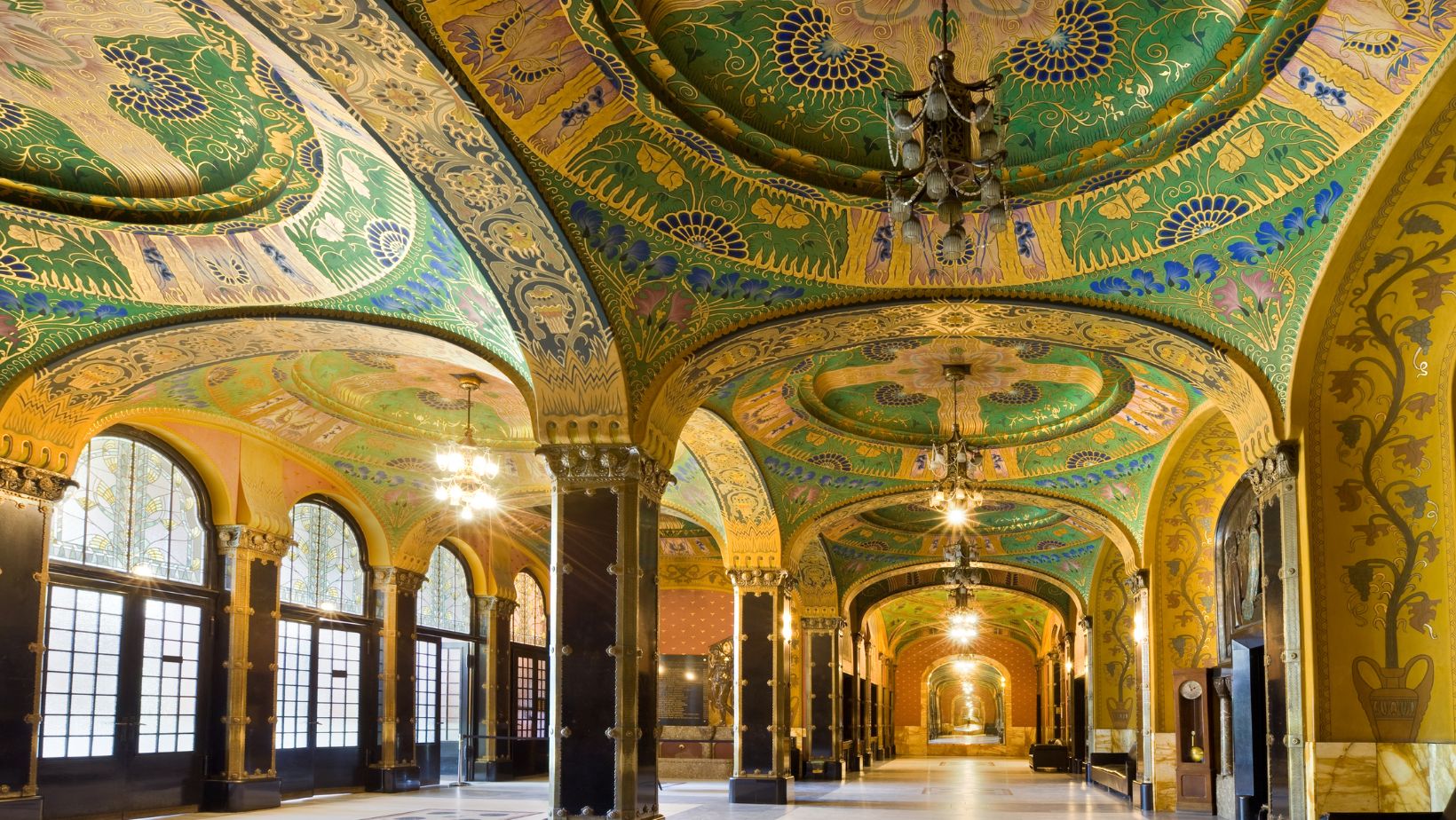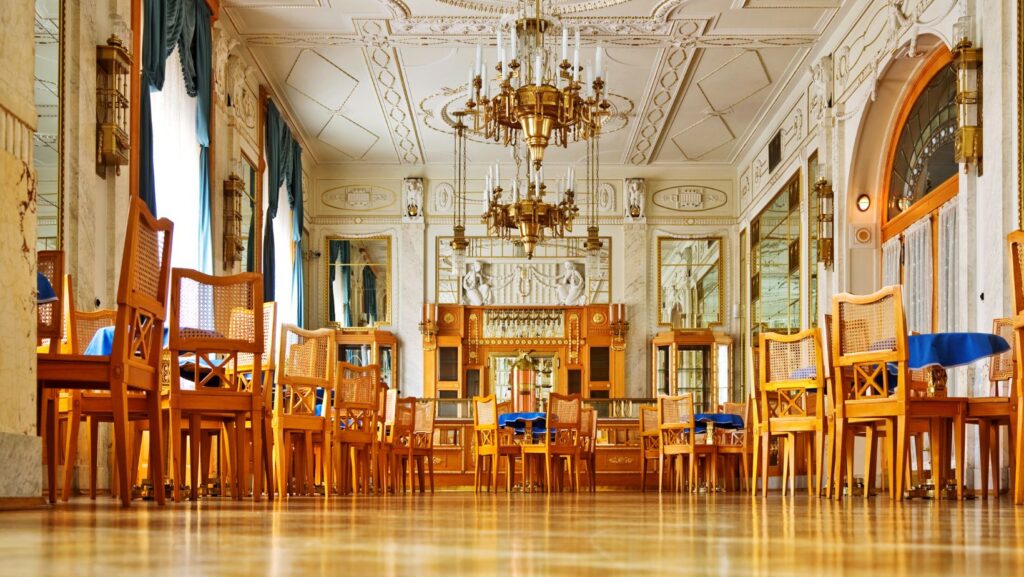Art Nouveau is a captivating and sophisticated style that appeared in the late 19th and early 20th centuries. To this day, it remains an emblem of elegance and intricate beauty in interior design. Merging the past’s charm with contemporary sensibilities. Art Nouveau is characterised by organic forms, flowing lines and nature-inspired motifs, this design has broken away from the rigid structures of earlier eras.
The Origins and Philosophy
Meaning “new art” in French, Art Nouveau originated as a response to the industrial revolution’s mechanized production and the prevailing artistic styles of the time. Influenced by the Arts and Crafts movements, Art Nouveau emphasized handcrafted artistry, drawing inspiration from natural forms such as flowers, plants, and the curves of the human body. The style aimed to harmonize with nature. Promoting a seamless integration between the built environment and the natural world.
Architects like Antoni Gaudí, Victor Horta, and Hector Guimard were pioneers of this movement. They infused their architectural designs with flowing, organic lines and intricate details that became synonymous with Art Nouveau. These architects looked to create spaces that were functional as well as visually and emotionally engaging; blurring the lines between art and everyday life.
Key Characteristics
Organic Forms and Flowing Lines: One of the most distinctive features of Art Nouveau is the use of organic forms and flowing lines. Unlike the straight lines and sharp angles of earlier styles, this design embraces curves and sinuous shapes, creating a sense of movement and fluidity. These lines can be found in everything from the architecture of doorways and windows to the intricate patterns on wallpaper and furniture.
Nature-Inspired Motifs: Nature plays a vital role in Art Nouveau design. Floral patterns, vines, and leaves are commonly incorporated into decorative elements, often in stylized forms. This love for nature is clear in stained glass windows featuring colorful depictions of flowers, wrought iron railings with delicate leaf motifs, and wallpaper adorned with intricate botanical designs.

Use of Luxurious Materials: Art Nouveau interiors often feature high-quality, luxurious materials. Think rich woods, marble, and opulent fabrics like silk and velvet; these add a touch of elegance and sophistication to the space. These materials are often combined in unexpected ways, too, creating a harmonious yet eclectic aesthetic.
Integration of Art and Function: In keeping with the philosophy of the movement, this design blues the line between functional objects and works of art. Furniture, lighting fixtures and even everyday objects like door handles and light switches are designed with an artistic flair; often featuring intricate detailing and elaborate artisanry.
Incorporating Art Nouveau into Modern Homes
While Art Nouveau is rooted in a specific historical context, its timeless appeal makes it adaptable to contemporary interior design.
Curved Furniture and Architectural Details: Introduce furniture with curved lines and elegant, flowing shapes into your living space. Look for pieces like curvilinear sofas, chairs with sinuous armrests and tables with undulating edges. Similarly, consider incorporating details such as arched doorways. Curved staircases and ornate mouldings to infuse a sense of Art Nouveau elegance.
Elegant Flooring: With its geometric patterns and rich wood tones, parquet flooring is another hallmark of Art Nouveau interiors. Especially the herringbone or chevron patterns. Alternatively, luxury vinyl tiles can mimic this elegance but at a cost-friendly price.

Nature-Inspired Motifs: Bring the beauty of nature indoors with décor that features floral and botanical motifs. Choose wallpaper with stylized floral patterns, hang artwork depicting nature scenes, and incorporate textiles adorned with leaf and vine designs. For a more subtle approach, add potted plants and fresh flowers to your space to create a connection with the natural world.
Stained Glass and Decorative Panels: These are quintessential elements of Art Nouveau design as they add a touch of colour and artistry. If stained glass windows aren’t a possibility, consider using stained glass lamps or decorative screens with intricate patterns to achieve a similar effect.
Luxurious Textures and Materials: Elevate your interior with rich wood finishes, marble countertops, and plush velvet upholstery. Mixing these materials can create a lavish yet inviting atmosphere reminiscent of Art Nouveau’s opulent aesthetic.
Artistic Lighting Fixtures: Choose lighting fixtures that double as works of art, such as chandeliers with flowing, organic shapes or table lamps with stained glass shades. These not only provide illumination but also serve as focal points, adding a touch of elegance to your home.

